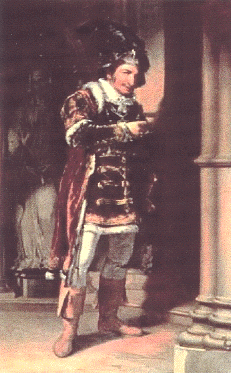George Frederick Cooke (George Frederick Cooke)

Actor. Hailed on both sides of the Atlantic as the greatest tragedian of his era, he was dramatic even in death. The British star’s skull was allegedly used in Edwin Booth’s production of Hamlet, and his headless ghost is said to haunt this Manhattan churchyard. Born in Westminster, Cooke had been orphaned and impoverished as a child, then apprenticed to a printer. He turned to acting at age 15 after being inspired by a troupe of traveling players. His professional debut in 1771 went unnoticed, however, and his increasingly dissipated lifestyle often obscured his talent. It wasn’t until 1800, when his brilliant performance as Shakespeare’s Richard III stunned London audiences, that he became a star. Commanding the stage with his piercing eyes and richly shaded line readings, Cooke excelled at both comedy and tragedy, but was unequaled in villainous roles like Iago and Shylock. He continued to drink to excess, however, missing performances and engaging in eccentric behavior that audiences found “insulting and insufferable”, in the words of a contemporary biographer. The actor made his American debut in 1810, and the 2-year tour which followed was a landmark cultural event. Yet this final triumph was marred by drunken episodes, and the 56-year-old star’s alcoholism proved fatal before his return to England. Cooke’s body was reportedly decapitated because he had willed his head to science to pay his doctor bills. The handsome monument which marks his grave was erected in 1821 by another great English actor, Sir Edmund Kean. (bio by: Nikita Barlow)
Born
- April, 17, 1756
- England
Died
- September, 09, 1812
- USA
Cemetery
- Saint Paul's Chapel and Churchyard
- USA

